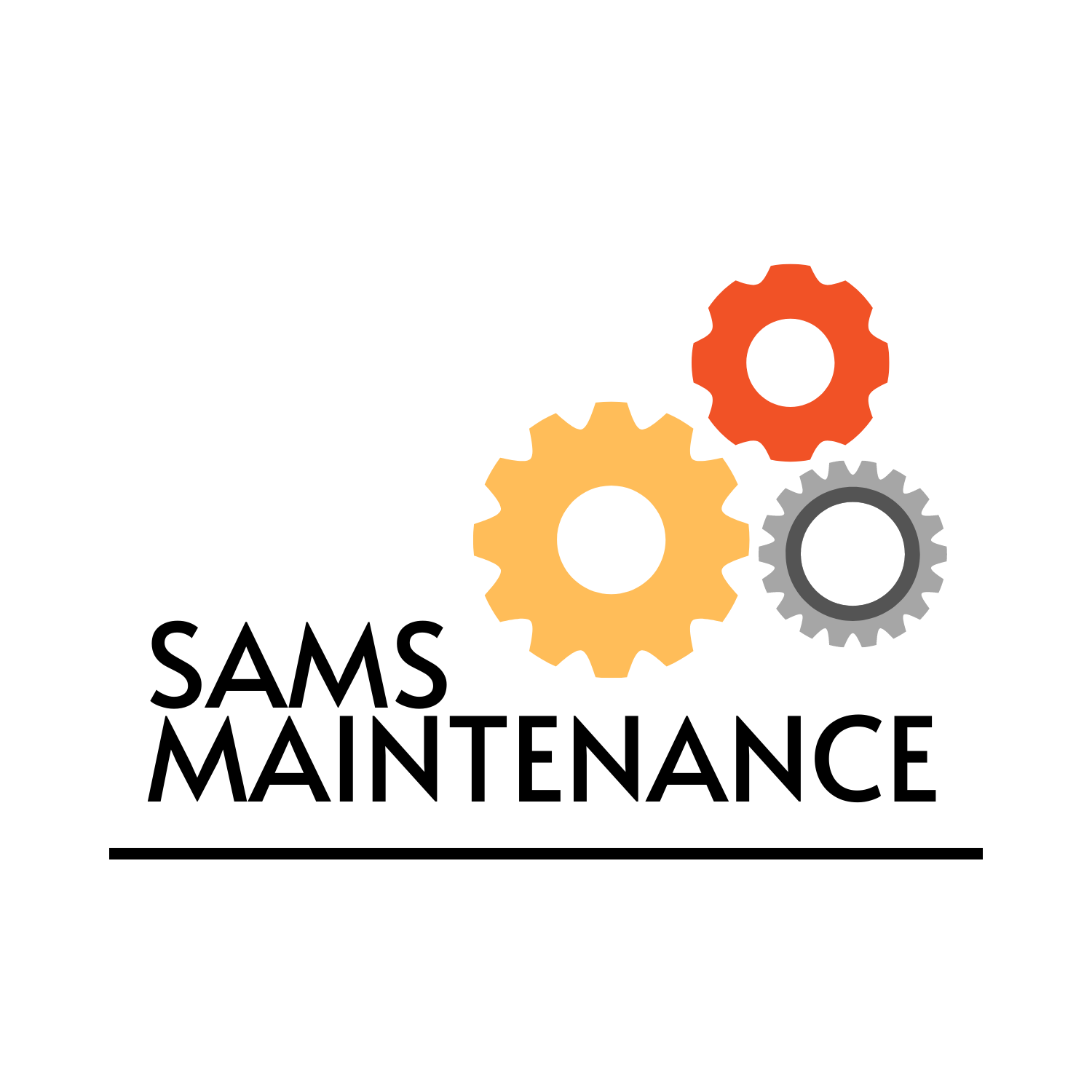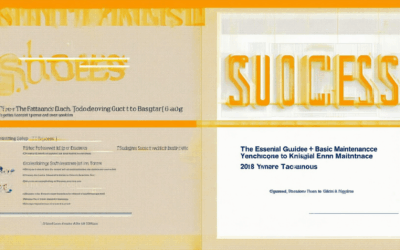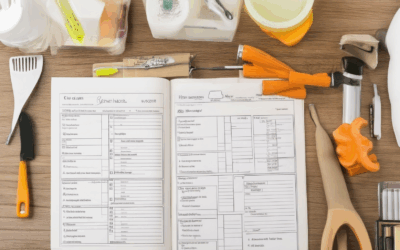Homeownership comes with its fair share of responsibilities, and one of the most crucial yet often overlooked aspects is preventative home repair. By taking proactive steps to maintain your property, you can prevent minor issues from escalating into major, costly repairs. Whether it’s inspecting your HVAC system, checking your plumbing, or ensuring your appliances are functioning optimally, understanding and implementing preventative home maintenance is key to preserving your home’s integrity and ensuring long-term functionality. This guide dives into the essential practices, tools, and strategies that every homeowner should know, providing answers to your top questions about preventing home repairs before they happen. From creating a maintenance checklist tailored to your needs to understanding the 1% rule for home maintenance, this comprehensive resource will equip you with the knowledge needed to keep your home in prime condition. By investing time and effort into regular preventative care, you not only save money but also minimize disruptions and ensure your living space remains safe and comfortable for years to come. So, let’s explore the ins and outs of preventative home repair and how it can be your first line of defense against unexpected issues.
Key Takeaways
- Master Preventative Home Repair with the 1% Rule: Set aside 1% of your home’s purchase price annually for unexpected repairs, preparing you financially and prolonging your home’s lifespan.
- Budget 1-4% of Your Home’s Value Annually: Allocate funds for routine maintenance, major systems, and emergencies, while exploring tax benefits to optimize your budget.
- Stay Proactive with Monthly Checks: Inspect for leaks, clean gutters, test alarms, and service appliances to catch issues early and maintain safety.
- Prioritize Annual Maintenance: Conduct thorough checks on exteriors (roof, chimneys) and interiors (paint, flooring), ensuring everything runs smoothly.
- Consider DIY Projects Wisely: Handle minor repairs yourself to save costs, but consult professionals for complex tasks requiring expertise.
- Enhance Long-Term Home Value: Regular maintenance prevents costly repairs and ensures your home stays in top shape, adding to its resale value.
- Use Resources for Guidance: Explore platforms like HomeAdvisor, Fixer Upper, and Sam’s Maintenance for expert advice and local services.

What is Preventive Home Maintenance?
Preventive home maintenance refers to a series of regular checks and routine tasks aimed at preserving the condition and functionality of your home. By addressing potential issues before they escalate, you can save money on costly repairs and extend the lifespan of your property. Here’s a breakdown of key components:
Key Areas to Focus On
- HVAC Systems: Schedule annual inspections to ensure your heating and cooling systems are operating efficiently. Clean or replace filters regularly to prevent dust buildup.
- Plumbing Systems: Check pipes for leaks or corrosion. Inspect water heaters and ensure they’re functioning properly to prevent unexpected failures.
- Electrical Systems: Test circuit breakers and ensure wiring is secure. Replace outdated switches or outlets to reduce fire hazards.
- Fabric Maintenance: Regularly inspect roofs, siding, and windows for signs of wear or damage. Address issues promptly to prevent further deterioration.
- Landscape and Outdoor Features: Trim trees and bushes, clear gutters, and inspect walkways. Ensure outdoor structures like decks and fences are stable and secure.
Why It’s Important
Preventive maintenance helps catch small problems before they become big ones. It also ensures your home operates safely and efficiently, contributing to overall energy savings and comfort.
Benefits of Regular Maintenance
- Extends the life of appliances and systems.
- Reduces the risk of accidents or safety hazards.
- Saves money on repair costs and unexpected expenses.
- Improves the value of your home.
Getting Started
Start by creating a checklist tailored to your home’s unique needs. Prioritize areas that are more prone to issues based on your location and home design. For instance, if you live in an area with heavy weather, focus on storm preparation and roof maintenance.
Resources and Tools
To help you get started, consider using our maintenance checklist and exploring preventive maintenance tips . These resources provide step-by-step guidance for homeowners at all levels of experience.
By implementing a consistent preventive maintenance routine, you’ll enjoy a safer, more reliable, and energy-efficient home. Don’t wait until a problem arises—take proactive steps today to safeguard your investment.
What Qualifies as Preventative Maintenance?
Preventative maintenance (PM) refers to a systematic approach to regularly inspect, monitor, and maintain equipment or systems to prevent breakdowns and extend their lifespan. It involves scheduled tasks based on factors like usage, time, or manufacturer recommendations.
Components of Effective Preventative Maintenance
- Regular Schedule : Maintenance is typically performed at predetermined intervals, whether time-based (e.g., every 6 months) or usage-based (e.g., miles driven or hours operated).
- Predictive Monitoring : Using tools like sensors or diagnostic software to detect potential issues before they escalate.
- Detailed Inspections : Checking for wear, damage, or loose components during inspections.
- Replacement of Worn Parts : Replacing parts like filters, belts, or lubricants as needed.
- Documentation : Keeping records of maintenance activities for future reference and to track equipment health over time.
Types of Preventative Maintenance
- Time-Based Maintenance : Scheduled at regular intervals regardless of usage.
- Usage-Based Maintenance : Adjusted according to the equipment’s operating hours or mileage.
- Condition-Based Maintenance : Triggered by specific conditions detected through monitoring systems.
Benefits of Proper Preventative Maintenance
- Extended Equipment Life : Reduces stress on machinery and prevents premature failure.
- Reduced Downtime : Minimizes unexpected breakdowns, ensuring smoother operations.
- Cost Savings : Lower repair costs and fewer emergency maintenance situations.
- Safety : Identifies and fixes hazards before they can cause accidents.
Examples of Preventative Maintenance Tasks
- Oil and filter changes
- Belt and hose replacements
- Lubrication applications
- Filter replacements (air, fuel, etc.)
- Tune-ups and adjustments
By implementing these practices, organizations can ensure their equipment runs efficiently and reliably, reducing operational disruptions and maintenance costs over time.

Is Preventative Maintenance Necessary as a Homeowner?
As a homeowner, preventative maintenance is not just a recommendation—it’s a necessity. Regular checks and routine tasks can save you from costly repairs, extend the lifespan of your appliances, and ensure your home remains safe and functional year-round.
Why Preventative Maintenance Matters
Preventative maintenance helps catch potential issues before they escalate, preventing unexpected breakdowns and expensive repairs. Here are some key reasons why it’s essential:
- Safety First:** Regular checks can identify hazards like loose wires, faulty plumbing, or structural issues that could pose risks to your family.
- Cost Savings:** Addressing problems early saves money compared to emergency repairs. For example, replacing a worn-out HVAC filter can prevent costly damage to your system.
- Home Reliability:** Well-maintained systems run more efficiently, reducing energy waste and extending the life of your appliances.
- Resale Value:** A well-maintained home often appeals to buyers and can increase its resale value.
Key Areas to Prioritize
Make sure to schedule regular maintenance for these critical systems:
1. HVAC Systems
Your heating and cooling systems work hard year-round. Replace or clean filters, inspect ductwork, and ensure your system is tuned up twice a year. Learn more about HVAC maintenance .
2. Plumbing Systems
Leaky pipes, clogged drains, and worn-out fixtures can lead to major headaches. Schedule annual inspections and address minor issues before they become emergencies. Explore plumbing maintenance tips .
3. Electrical Systems
Outdated wiring or faulty switches can be dangerous. Have your electrical system inspected regularly and update older components to modern standards. Find out how to maintain your electrical system .
4. Roof and Exterior
A well-maintained roof and exterior can protect your home from weather damage. Check for missing shingles, gutters, and siding, and repair any damage promptly. Discover roofing maintenance best practices .
How to Get Started
Creating a maintenance schedule can help you stay on track. Set reminders for tasks like gutter cleaning, HVAC tune-ups, and chimney inspections. For complex jobs, consider hiring a professional to ensure everything is done correctly and safely.
By investing in preventative maintenance, you’re not just taking care of your home—you’re safeguarding your family’s comfort, safety, and peace of mind. Don’t wait until something breaks to take action. Start maintaining your home today and enjoy the benefits for years to come!

Understanding the 1% Rule for Home Maintenance
The 1% rule for home maintenance is a simple yet effective strategy to prepare for unexpected repair costs. Here’s a breakdown of what it involves:
- 1% of the Home’s Purchase Price : Set aside 1% of the total price you paid for your home each year for maintenance. This creates a reserve fund to cover unforeseen repair costs.
- Annual Budget Calculation : For a $300,000 home, this would mean saving $3,000 annually or approximately $250 monthly.
- Purpose of the Fund : This money is meant for repairs, replacements, and unexpected issues like plumbing, electrical work, or roof damage.
Why the 1% Rule Works:
- Preparedness : Helps avoid financial stress when emergencies occur.
- Longevity : Regular maintenance can extend the life of your home and reduce major repair costs over time.
- Flexibility : Allows you to address specific needs based on your home’s condition.
Considerations Beyond the 1% Rule:
- Home Age and Condition : Older homes may require more frequent maintenance, potentially increasing your annual contribution.
- Specialized Systems : Homes with unique features like septic tanks or solar panels may need additional funding.
- Unexpected Costs : Natural disasters or rare appliance failures can exceed typical maintenance budgets.
To Enhance Your Maintenance Plan:
- Create a Detailed Budget : Track all maintenance expenses and adjust your savings accordingly.
- Prioritize Repairs : Address minor issues before they escalate to prevent costly damage.
- Consider Insurance : Explore maintenance coverage options to supplement your savings.
For More Resources:
- HomeAdvisor – Connect with local professionals for home maintenance services.
- Fixer Upper – Tips and guides for DIY home maintenance projects.
- Sams Maintenance – Expert advice and resources for homeowners.
By following the 1% rule and staying proactive, you can protect your home and budget from unexpected expenses.
How Much Should I Budget for Home Maintenance and Repairs?
A well-planned budget is essential for managing home maintenance and repairs. Here’s a structured approach to determine an appropriate budget:
- Percentage of Home Value:** The general guideline is to budget 1% to 4% of your home’s value annually. For example, if your home is valued at $350,000, aim to set aside $3,500 to $14,000 yearly.
- Categories to Consider:** – Routine Maintenance: Include costs for lawn care, landscaping, cleaning gutters, and seasonal tasks. – Major Systems: Set aside funds for HVAC, plumbing, and electrical systems, as these can be costly to repair or replace. – Unexpected Emergencies: Allocate a portion for unforeseen repairs, such as appliance breakdowns or structural issues. – Appliance Replacement: Plan for replacing major appliances every few years to prevent unexpected repair bills.
- Historical Spending Review:** Look back at your past year’s maintenance expenses to establish a baseline and identify areas where you can cut costs or allocate more funds.
- Tax Benefits:** Check if there are any tax deductions or credits available for home maintenance and repairs. Consulting a tax professional can provide clarity on this matter.
- Budget Allocation Example:** – 20-30% of Income: Allocating this range can cover both regular maintenance and unexpected repairs, offering a balanced approach. – Weather-Related Costs: If you live in an area prone to harsh weather, increase your budget for roof repairs, siding, and window replacements.
- D.I.Y. Projects:** Consider handling minor repairs yourself to save money. However, be mindful of your skills and capacity to avoid unnecessary expenses from poor repairs.
- Annual Review:** Periodically reassess your budget to account for changes in home condition, new maintenance needs, or shifts in financial circumstances.

House Maintenance Rules: A Comprehensive Guide
The maintenance of a house is essential to ensure its longevity and value. Here are some key rules and guidelines to follow:
1. The 1% Rule for Maintenance
The 1% rule suggests setting aside 1% of the property’s purchase price for annual maintenance costs. This ensures that unexpected repair expenses are covered without causing financial strain.
2. Monthly House Maintenance Checklist
- Check for Leaks: Inspect pipes, faucets, and hoses for signs of wear or damage.
- Clean Gutters: Remove debris and ensure water flows freely to prevent water damage.
- Test Smoke Detectors: Regularly check smoke detectors and carbon monoxide alarms to ensure they’re functioning properly.
- Inspect Windows: Look for cracks or drafts and seal them to improve energy efficiency.
- Service Appliances: Schedule routine maintenance for HVAC systems, refrigerators, and other appliances to prevent breakdowns.
3. Annual Maintenance Tasks
Annual inspections and maintenance are critical for catching potential issues early:
- Exterior Maintenance:
- Inspect the roof for missing shingles or damaged areas.
- Trim trees and bushes to prevent branches from touching the house.
- Clean and check the chimney for blockages or damage.
- Interior Maintenance:
- Check for peeling paint or wallpaper and repaint as needed.
- Inspect flooring for warping or uneven surfaces.
- Clean and service your HVAC system to ensure optimal performance.
4. Additional Tips for Effective House Maintenance
- Hire Professionals When Necessary: While some tasks can be handled by homeowners, others may require specialized skills, such as plumbing or electrical work.
- Use High-Quality Tools: Invest in durable tools and equipment to handle maintenance tasks effectively.
- Keep Records: Maintain a logbook of all maintenance activities, including repairs, services, and inspections.
- Stay Attentive to Small Issues: Address minor problems promptly to prevent them from escalating into larger, more costly issues.
Conclusion
Regular house maintenance is not just about fixing things when they break—it’s about preventing issues before they happen. By following these guidelines, you can ensure your home remains in great shape for years to come. Remember, a well-maintained home is a happy home!




0 Comments